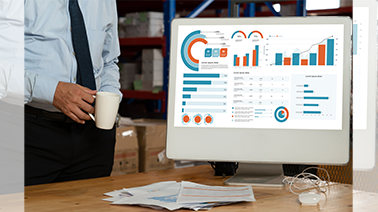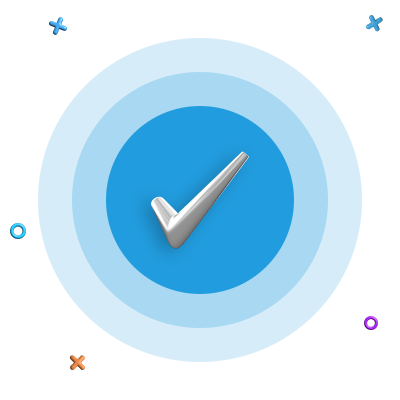In today’s fast-paced manufacturing world, keeping everything running smoothly is more critical than ever. That’s where Manufacturing ERP (Enterprise Resource Planning) systems come into play. These systems are designed to help manufacturing businesses streamline their operations, improve efficiency, and boost productivity. In today's fast-paced manufacturing environment, integrating cloud based ERP software is essential for its multitude of benefits in improving operational efficiency and productivity. But with so many ERP solutions available, it can be tough to know what features you really need. In this article, we’ll break down the key modules you should look for in an ERP for the manufacturing industry and explain how they can make your business run better.
What is a Manufacturing ERP System?
A Manufacturing ERP software is a software platform that integrates all the key functions of a manufacturing business into one cohesive system. This integration helps manage everything from inventory and production planning to quality control and human resources. The main goal of an ERP system is to provide a single, unified view of all your business operations, making it easier to manage processes, make informed decisions, and enhance productivity.
Key Modules of a Manufacturing ERP System
When choosing an erp for manufacturing, it’s essential to understand the different modules that make up the solution. Here’s a detailed look at the core modules you should consider:
1. Inventory Management
What It Does:
Inventory management is all about keeping track of the materials and products you have in stock. This module helps you manage raw materials, work-in-progress, and finished goods efficiently.
Why It’s Important:
Having the right amount of inventory is crucial. Too much inventory ties up cash and space, while too little can halt production. Inventory management ensures you have the right materials at the right time, preventing production delays and reducing costs.
Key Features:
- Real-time tracking of inventory levels
- Automated reordering based on stock levels
- Integration with procurement and sales modules
2. Production Planning and Scheduling
What It Does:
This module helps you plan and schedule production activities. It considers factors like demand forecasts, machine capacity, and workforce availability to create a production plan that maximizes efficiency.
Why It’s Important:
Effective production planning ensures that you can meet customer demand without overloading your resources. It minimizes downtime, optimizes machine usage, and ensures that production runs smoothly.
Key Features:
- Scheduling tools
- Capacity planning and load balancing
- Real-time tracking of production progress
3. Quality Control
What It Does:
Quality control ensures that your products meet the required standards and regulations. This module tracks quality metrics throughout the production process, from raw material inspection to final product testing.
Why It’s Important:
Maintaining high quality is essential for customer satisfaction and regulatory compliance. Quality control helps you identify and address defects early, reducing waste and improving product reliability.
Key Features:
- Inspection checklists and quality testing procedures
- Defect tracking and analysis
- Compliance management and reporting
4. Supply Chain Management (SCM)
What It Does:
SCM manages the flow of materials and products across your supply chain. It connects suppliers, manufacturers, and customers, ensuring that materials are delivered on time and products reach the market promptly.
Why It’s Important:
A well-managed supply chain reduces lead times, lowers costs, and improves customer satisfaction. SCM helps you optimize procurement, manage supplier relationships, and ensure a smooth flow of materials.
Key Features:
- Supplier collaboration tools
- Demand forecasting and inventory optimization
- Order tracking and shipment management
5. Financial Management
What It Does:
The financial management module handles all aspects of your business’s finances, including accounting, billing, invoicing, and financial reporting. It provides a comprehensive view of your financial health.
Why It’s Important:
Accurate financial management is crucial for making informed business decisions. It ensures that you stay on top of your finances, manage cash flow effectively, and maintain profitability.
Key Features:
- General ledger and chart of accounts
- Accounts payable and receivable management
- Financial reporting and analysis tools
6. Shop Floor Control
What It Does:
Shop floor control monitors and manages activities on the factory floor in real-time. It tracks machine status, labor utilization, and production progress, ensuring that everything runs smoothly.
Why It’s Important:
Effective shop floor control minimizes downtime, boosts productivity, and ensures that production targets are met. It provides real-time insights into production status, helping you make quick decisions.
Key Features:
- Real-time machine and labor tracking
- Production order management
- Performance dashboards and reporting
7. Human Resources (HR) Management
What It Does:
The HR management module handles all aspects of employee management, including recruitment, payroll, attendance, and performance evaluation. It ensures that your workforce is well-managed and compliant with labor laws.
Why It’s Important:
A well-managed workforce is critical for operational efficiency. HR management helps you attract and retain talent, manage payroll effectively, and ensure compliance with labor regulations.
Key Features:
- Employee records and database management
- Time and attendance tracking
- Recruitment, training, and performance management tools
8. Business Intelligence (BI) and Reporting
What It Does:
BI and reporting modules analyze data from all parts of the ERP system to generate insights and reports. They help you monitor performance, identify trends, and make data-driven decisions.
Why It’s Important:
Data-driven decision-making is key to staying competitive. BI tools provide actionable insights that help you improve processes, reduce costs, and drive growth.
Key Features:
- Customizable dashboards and report generation
- Data visualization and trend analysis
- Advanced analytics and predictive modeling
9. Maintenance Management
What It Does:
Maintenance management schedules and tracks maintenance activities for equipment and machinery. It helps you prevent breakdowns, extend equipment life, and minimize downtime.
Why It’s Important:
Regular maintenance keeps your machinery in top condition, reducing the risk of unexpected breakdowns and production delays. It ensures that equipment is always ready to perform at its best.
Key Features:
- Preventive maintenance scheduling
- Work order management and tracking
- Equipment history and performance monitoring
Choosing the Right Manufacturing ERP System
Choosing the right ERP system is a big and important decision for any manufacturing business. Here are some tips to help you choose the best solution for your needs:
- Assess Your Needs:Understand your business requirements and the specific challenges you face. Consider factors like the size of your business, the complexity of your operations, and your growth plans.
- Evaluate Features:Look for cloud based erp systems for manufacturing that offers the modules and features that align with your needs. Make sure it covers all the key areas of your business, from inventory management to HR and financial management.
- Consider Scalability:Pick a system that can expand as your business grows. It should be scalable and flexible, allowing you to add new modules or features as your business evolves.
- Check Integration Capabilities:Ensure that the ERP system can integrate with your existing software and systems. Seamless integration with other tools, like CRM systems or production equipment, is essential for smooth operations.
- Look for User-Friendly Design:The system should be easy to use and navigate. A user-friendly interface and comprehensive training resources can help your team adapt quickly to the new system.
- Review Vendor Support and Services:Choose a vendor that offers reliable support and maintenance services. Look for a vendor with a good reputation for customer service and technical support.
Conclusion:
In summary, a well-chosen, cloud based ERP for manufacturing is a game-changer for any manufacturing business. It brings together all the essential functions into a single, cohesive platform, making it easier to manage operations, improve efficiency, and drive growth. By understanding the key modules and features to look for, you can select an ERP solution that meets your specific needs and helps you stay competitive in today’s fast-evolving market. Whether you’re looking to streamline your production processes, enhance quality control, or improve financial management, the right ERP system can make all the difference.






